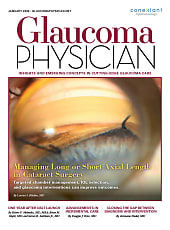
AS A FUTURIST IN THE EYECARE space, I am always on the lookout for the latest advancements in technology that could transform the field, my practice, or my patient care. I get to consult with companies about their future innovations and help them see how to bring them to reality. I believe that the future of eye care lies in the integration of emerging technologies, such as artificial intelligence (AI), machine learning, and telemedicine. When I was in optometry school, my optometrist grandfather wrote me a letter stating that the biggest development of his career was pharmaceuticals, and he predicted how my career would be defined by technology.
While AI is not likely to cure presbyopia, it can be used in various ways to aid in the treatment and management of the condition. Here are some ways AI may be used to transform our care of presbyopic patients.
- Automated vision testing: AI-powered tools can conduct vision tests that detect presbyopia and measure the degree of vision impairment, angle kappa, and the way in which patients use their vision. These tests can be performed remotely, which can help patients who live in remote or underserved areas or who have mobility issues.
- Customized lens design: AI can assist in designing customized lenses for patients with presbyopia. AI can analyze factors such as the patient’s age, eye shape, and prescription, to create lenses that provide optimal vision correction. This includes glasses, contact lenses, and customized intraocular lenses for patients.
- Augmented reality (AR) glasses: AR glasses can be programmed to provide augmented vision that helps patients see better. It’s likely this technology will really explode for low-vision patients, but eventually it will be used to help people with presbyopia to see better. AI algorithms can analyze the wearer’s eye movements and create a customized view that enhances the focus on nearby objects.
- Telemedicine: AI-powered telemedicine platforms can provide remote consultations and follow-ups for patients with presbyopia. Patients can consult with their doctors and receive advice about vision exercises, medication, or surgery options.
AI will not be a cure for presbyopia, but it has the potential to revolutionize the way eyecare providers diagnose, treat, and manage the condition. Automated vision testing, customized lens design, AR glasses, and telemedicine are just a few examples of how I believe that AI can be used to enhance the care we provide to presbyopic patients. As someone looking to the future of the eyecare space, I believe that we must continue to explore and integrate emerging technologies like AI to make our practices more efficient, but more importantly, to provide the best possible care to our patients.
By embracing innovation and collaboration, we can work toward a future where presbyopia and other eye conditions can be managed more effectively and efficiently, improving the quality of life for millions of people around the world. ■
Thanks to AI for its help in crafting certain portions of this article.









